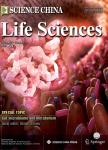SHANK1 and autism spectrum disorders
SHANK1 and autism spectrum disorders作者机构:MOE Key Laboratory of Contemporary Anthropology and State Key Laboratory of Genetic Engineering School of Life SciencesFudan University
出 版 物:《Science China(Life Sciences)》 (中国科学(生命科学英文版))
年 卷 期:2015年第58卷第10期
页 面:985-990页
核心收录:
学科分类:0710[理学-生物学] 0830[工学-环境科学与工程(可授工学、理学、农学学位)] 1002[医学-临床医学] 100205[医学-精神病与精神卫生学] 10[医学]
基 金:supported by grants from National Basic Research Program of China(2010CB529601) Natural Science Foundation of Shanghai Municipality(13ZR1402100) the National Natural Science Foundation of China(30900404)
主 题:autism spectrum disorders SHANK1 synapse genetics mouse model
摘 要:Autism spectrum disorders (ASD) are highly heterogeneous pediatric developmental disorders with estimated heritability more than 70%. Although the genetic factors in ASD are mainly unknown, a large number of gene mutations have been found, especially in genes involved in neurogenesis. The Neurexin-Neuroligin-Shank (NRXN-NLGN-SHANK) pathway plays a key role in the formation, maturation and maintenance of synapses, consistent with the hypothesis of neurodevelopmental abnormality in ASD. Presynaptic NRXNs interact with postsynaptic NLGNs in excitatory glutamatergic synapses. SHANK proteins function as core components of the postsynaptic density (PSD) by interacting with multiple proteins. Recently, deletions and point mutations of the SHANK1 gene have been detected in ASD individuals, indicating the involvement of SHANK1 in ASD. This review focuses on the function of SHANK1 protein, Shankl mouse models, and the molecular genetics of the SHANK1 gene in human ASD.



